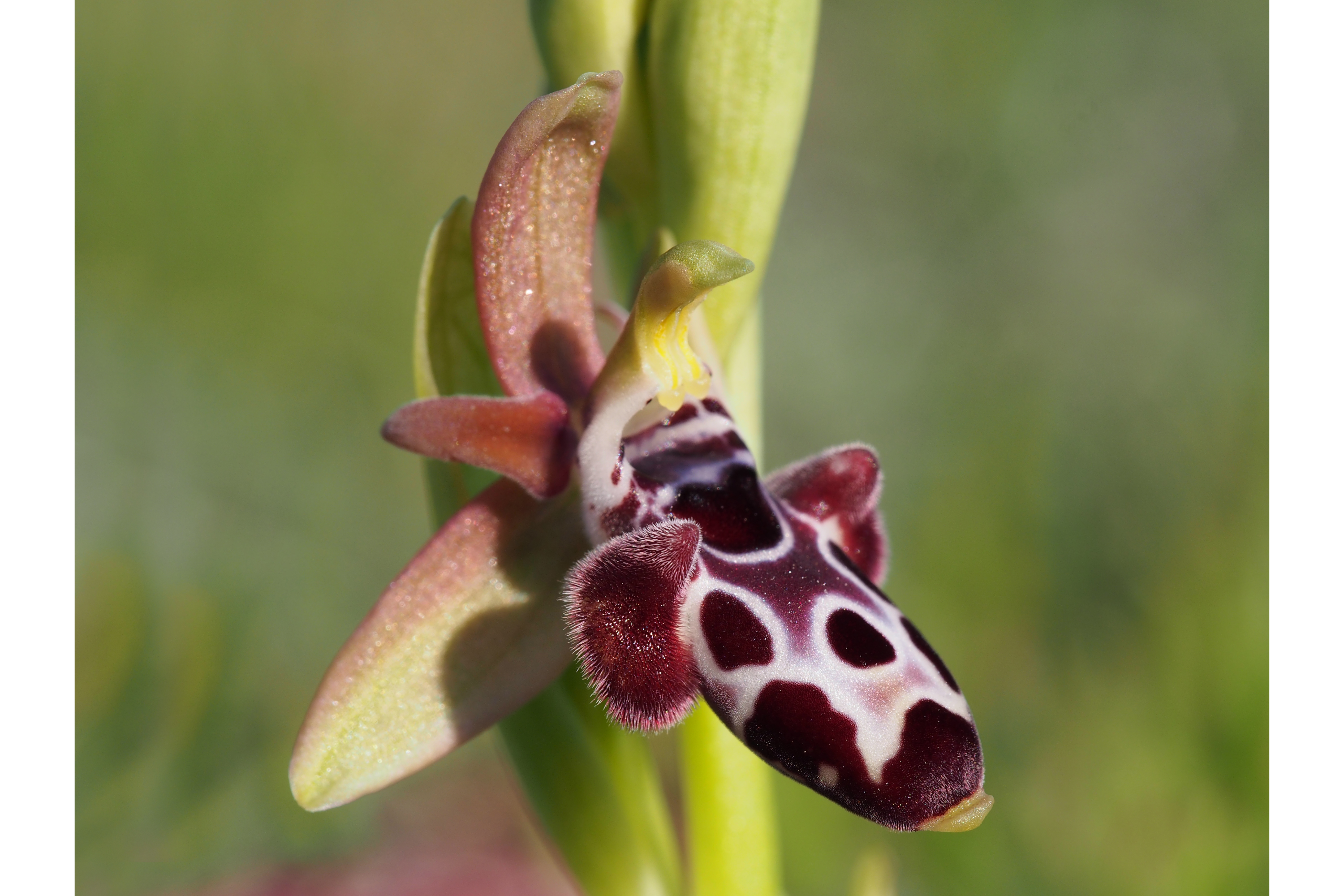Cyprus bee orchid
(Ophrys kotschyi)

Description
Ophrys kotschyi, the Cyprus bee orchid, is a terrestrial species of orchid native to Greece and Cyprus. Ophrys kotschyi occurs in grasslands and in open pine woodlands. It is listed as "near-threatened" by the International Union for Conservation of Nature and Natural Resources. The genus Ophrys is a large group of orchids from the alliance Orchis in the subtribe Orchidinae. They are widespread across much of Europe, North Africa, Caucasus, the Canary Islands, and the Middle East as far east as Turkmenistan. These plants are remarkable in that they successfully reproduce through pseudocopulation, that is, their flowers mimic female insects to such a degree that amorous males are fooled into mating with the flowers, thereby pollinating them. There are many natural hybrids. They are referred to as the "bee orchids" due to the flowers of some species resemblance to the furry bodies of bees and other insects. Their scientific name Ophrys is the Greek word for "eyebrow", referring to the furry edges of the lips of several species. Ophrys was first mentioned in the book "Natural History" by Pliny the Elder (23-79 AD). They are terrestrial or ground orchids from central to South Europe, North Africa, Asia Minor, up to the Caucasus Mountains, but mostly in the Mediterranean region. They have been said to be the most important group of European terrestrial orchids. During summer, all Ophrys orchids are dormant as underground bulbous tubers, which serve as a food reserve. In late summer/autumn they develop a rosette of leaves. Also a new tuber starts to grow and matures until the following spring; the old tuber slowly dies. The next spring the flowering stem starts to grow. During flowering the leaves have already started to wither. Most Ophrys orchids are dependent on symbiotic fungi. Transplanting specimens, especially wild specimens, is difficult, sometimes impossible, due to this symbiosis unless a large amount of surrounding earth is also taken with the plant. All orchids are protected under CITES II and should not be removed or disturbed in habitat. The shiny, basal leaves have a green or bluish color.
Taxonomic tree:







